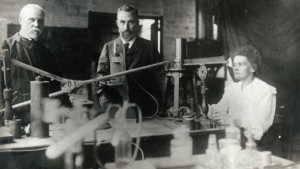
A groundbreaking digital tool has been developed to improve the early detection of dementia, particularly Alzheimer’s disease and related dementias (ADRD), in primary care settings. Researchers from the Indiana University (IU) School of Medicine, Regenstrief Institute, Eskenazi Health, University of Miami School of Medicine, and Lamar University have introduced a fully digital, zero-cost method that can be integrated across primary care clinics without increasing the workload for physicians.
The innovative approach combines data from the Quick Dementia Rating System (QDRS) with a Passive Digital Marker (PDM). The PDM is a machine learning algorithm that employs natural language processing to analyze information from electronic health records (EHRs), identifying key indicators of dementia such as memory problems and vascular issues.
In a randomized clinical trial involving over 5,300 patients, the researchers demonstrated that this method significantly increased the rate of ADRD diagnoses by 31% within 12 months. Remarkably, this was achieved without requiring additional time or resources from the clinical team.
Transforming Primary Care with AI
The findings represent a significant advancement in the integration of artificial intelligence into everyday clinical practice. “This is the most scalable approach to early detection that I know of,” stated Malaz A. Boustani, MD, a research scientist at Regenstrief and co-developer of the PDM. “Most early detection methods require at least five minutes of a doctor’s time and often incur licensing fees. Our dual approach requires zero clinician time or money.”
Co-developer Zina Ben Miled, PhD, also emphasized the inclusivity of this method. “By embedding these tools directly into the electronic health record, we can reach patients who might otherwise be overlooked,” she noted. This ensures that all individuals, regardless of their background or resources, have equitable access to early detection and care.
The results of this research were published in the journal JAMA Network Open, detailing the significant impact of integrating QDRS and PDM within primary care environments. The team concluded that their combined approach effectively supports early detection in a fast-paced healthcare landscape, benefiting both the healthcare system and patients.
The authors pointed out the ongoing challenges in diagnosing ADRD within primary care, where over 50% of older adults do not receive timely formal diagnoses. Factors contributing to this issue include the limited time available for patient consultations and the stigma surrounding dementia.
Addressing the Challenges of Early Detection
Current methods for cognitive performance testing often require direct clinician involvement, presenting challenges for scalability and sustainability in primary care. While recent advancements, such as the FDA’s approval of a blood-based biomarker for Alzheimer’s, have emerged, there are still no established biomarkers for other forms of ADRD.
The research team suggests that leveraging patient-reported outcomes (PRO) and advances in machine learning could help mitigate these challenges. In their pragmatic randomized clinical trial, the dual approach combining QDRS and the PDM was seamlessly integrated into the Epic EHR system across nine federally qualified health centers in Indianapolis.
Patients aged 65 and older were automatically invited to complete the brief QDRS survey via their patient portal. Meanwhile, the PDM algorithm continuously monitored EHR data to identify at-risk patients, with results sent directly to clinicians’ inboxes for necessary follow-up without burdening their schedules.
The study revealed that this combined strategy not only boosted the rate of new ADRD diagnoses but also resulted in a 41% increase in follow-up assessments, such as neuroimaging and cognitive testing. This suggests a more proactive approach to dementia care, particularly for underserved populations.
James E. Galvin, MD, a professor of neurology at the University of Miami, praised the QDRS for its ability to empower patients and families in reporting cognitive changes. He emphasized that combining it with digital tools like the PDM facilitates effective early detection at scale.
“This work represents the next phase of our half-century legacy at Regenstrief,” said Boustani, who leads the Digital Detection of Dementia trial. “We’ve shown that it’s possible to bring the power of AI and patient-reported outcomes directly into the clinic—seamlessly, affordably, and at scale.”
The introduction of this AI-driven tool marks a significant step forward in addressing the challenges associated with dementia detection in primary care. By streamlining the process and enhancing accessibility, this innovative approach holds the potential to transform how dementia is identified and managed, ultimately improving health outcomes for older adults.







